#On Demand Innovative software Development
Explore tagged Tumblr posts
Text

At TechQWare, we specialize in delivering cutting-edge On-Demand App Development Solutions designed to empower businesses across various sectors.
#On Demand Innovative software Development#appdesign#androiddevelopment#webdevelopment#webdesign#iosdevelopment#androidstudio#websitedevelopment#appdevelopment#developer#app development
0 notes
Text
TaskRabbit Clone: On-Demand Service
Instant Access: One of the primary features of on-demand services is instant access to goods or services. Users can request what they need through a digital platform (such as a website or mobile app) and receive it almost immediately or at a scheduled time that suits them.
User-Friendly Interface: On-demand service platforms typically have user-friendly interfaces that make it easy for customers to navigate, search for services, and place orders efficiently. Intuitive design and clear instructions enhance the overall user experience.
Customization and Personalization: Many on-demand services offer customization options, allowing users to tailor their orders according to their preferences. This could include selecting specific features, options, or preferences related to the service being provided.
Geolocation and Tracking: On-demand services often utilize geolocation technology to match users with nearby service providers or delivery agents. Additionally, real-time tracking features enable users to monitor the progress of their orders, from confirmation to delivery.
Rating and Review System: To maintain service quality and build trust among users, on-demand platforms typically include rating and review systems. Users can rate their experiences and leave feedback, which helps other users make informed decisions and encourages service providers to maintain high standards.
Payment Integration: Seamless payment integration is a crucial feature of on-demand services. Users should be able to securely pay for the services they receive directly through the platform using various payment methods, such as credit/debit cards, mobile wallets, or digital payment systems.
Dynamic Pricing: Some on-demand services implement dynamic pricing models, where prices fluctuate based on factors such as demand, supply, time of day, or distance. This flexibility allows service providers to optimize their pricing strategies while providing users with transparent pricing information.
Multiple Service Categories: On-demand platforms often offer a wide range of services across multiple categories, catering to diverse user needs. Common categories include transportation (ride-hailing), food delivery, grocery delivery, household services, beauty and wellness, and more.
Service Provider Network: A robust network of service providers is essential for the success of on-demand platforms. These service providers may be independent contractors or businesses that partner with the platform to fulfill user requests promptly and efficiently.
24/7 Availability: Many on-demand services operate round-the-clock, providing users with access to goods or services whenever they need them. This availability adds to the convenience factor and accommodates users with varying schedules and preferences.
Regulatory Compliance and Safety Measures: On-demand service platforms must adhere to relevant regulations and implement safety measures to protect both users and service providers. This may include background checks for service providers, insurance coverage, compliance with local laws, and data protection measures.
Customer Support: Effective customer support is essential for addressing user inquiries, resolving issues, and providing assistance throughout the service journey. On-demand platforms typically offer multiple channels for customer support, such as chat support, helplines, or email assistance.
Scheduling and Booking: Many on-demand platforms offer scheduling and booking features, allowing users to plan and reserve services in advance. This functionality is particularly useful for services like appointments, reservations, or deliveries that need to be scheduled for a specific date and time.
Multi-platform Accessibility: To reach a broader audience, on-demand service platforms often provide accessibility across multiple devices and platforms. Users can access the service through mobile apps, websites, or even dedicated interfaces for smart devices like smart speakers or wearables.
Subscription and Membership Options: Some on-demand services offer subscription or membership options, providing users with access to exclusive benefits, discounts, or perks in exchange for a recurring fee. These subscription models enhance user loyalty and encourage repeat usage.
Reliability and Trustworthiness: A renowned company's on-demand service app is likely to have a reputation for reliability and trustworthiness. Users can have confidence that the services offered meet high standards in terms of quality, safety, and reliability.
Robust Infrastructure and Technology: Renowned companies typically invest heavily in developing robust infrastructure and cutting-edge technology for their apps. This results in a seamless and efficient user experience, with features such as real-time tracking, advanced security measures, and optimized performance.
Wide Range of Services: On-demand service apps from renowned companies often offer a comprehensive range of services across various categories, catering to diverse user needs. Whether it's transportation, food delivery, household services, or wellness offerings, users can find everything they need within a single platform.
Exceptional User Interface and Experience: Renowned companies prioritize user experience design, resulting in intuitive interfaces and smooth navigation. From the onboarding process to placing orders and tracking deliveries, every step is designed to be user-friendly and hassle-free.
High-Quality Service Providers: Renowned companies typically have strict criteria for selecting service providers, ensuring that only qualified and experienced professionals are onboarded. Users can expect to receive services from skilled and vetted individuals or businesses, enhancing the overall service quality.
Responsive Customer Support: Renowned companies understand the importance of excellent customer support and invest in dedicated support teams to assist users promptly and effectively. Whether it's resolving issues, addressing inquiries, or providing assistance, users can rely on responsive customer support channels.
Transparent Pricing and Policies: On-demand service apps from renowned companies often have transparent pricing structures and clear policies regarding fees, charges, and terms of service. Users can make informed decisions and understand the costs associated with the services they're using.
Innovative Features and Constant Updates: Renowned companies continuously innovate and introduce new features and enhancements to their on-demand service apps. This ensures that users benefit from the latest technologies, trends, and improvements, enhancing their overall experience over time.
Integration with Other Services and Platforms: On-demand service apps from renowned companies may integrate with other popular services and platforms, offering added convenience and functionality. For example, integration with payment gateways, mapping services, or loyalty programs can enrich the user experience.
Commitment to Safety and Compliance: Renowned companies prioritize safety and compliance with relevant regulations and standards. They implement robust safety measures, conduct background checks on service providers, and adhere to legal requirements, ensuring the safety and security of users and their transactions.
Community Engagement and Social Responsibility: Many renowned companies are committed to corporate social responsibility and actively engage with their communities. Users who choose their on-demand service apps can feel good knowing that they're supporting a company that gives back and contributes to positive social impact initiatives.
Accessibility Features for Diverse Audiences: Renowned companies recognize the importance of accessibility and inclusion, incorporating features to accommodate users with disabilities or specific needs. This could include options for text-to-speech functionality, screen reader compatibility, color contrast adjustments, or language translation services, ensuring that the app is accessible to all users.
Social Integration and Community Building: On-demand service apps created by renowned companies often include social integration features, allowing users to share their experiences, reviews, or recommendations with their social networks. This fosters community engagement, word-of-mouth referrals, and user-generated content, contributing to the app's popularity and growth.
Educational Resources and Content: Renowned companies may provide educational resources, tutorials, or informative content within their on-demand service apps to help users make informed decisions or learn new skills related to the services offered. This could include how-to guides, video tutorials, or articles on relevant topics, enriching the user experience and adding value beyond the core service offerings.
Continuous Improvement and Feedback Mechanisms: Renowned companies actively solicit feedback from users and leverage data analytics to identify areas for improvement within their on-demand service apps. This feedback loop enables them to iteratively enhance features, address user pain points, and stay responsive to evolving user needs and preferences, ensuring that the app remains competitive and relevant in the long term.
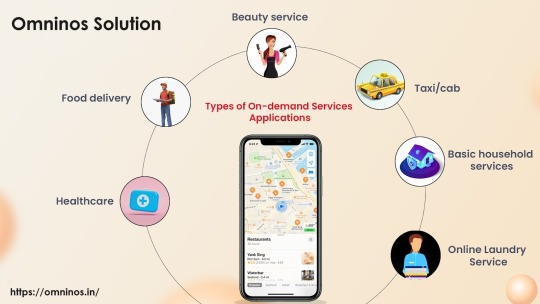
App Includes:
Android app
Ios app
Admin panel
Source code
Patent rights
Code ownership
1-3 months support and maintenance
Customisations
Payment gateway integration
Api integration
End to end deployment
Payment gateway integration
UI UX designing
Server migration
Unrestricted code
How Script Help us in Creating the App
Feature Prioritization: The script outlines a wide range of features that users expect from an on-demand service app. Developers can use this information to prioritize features based on their importance and relevance to the target audience. Features such as reliability, user-friendly interface, robust security, and responsive customer support should be given top priority during the development process.
User Experience Design: The script emphasizes the importance of exceptional user experience design, including intuitive interfaces, smooth navigation, and responsive customer support. Developers can use this guidance to design user interfaces that are easy to use, visually appealing, and optimized for various devices and screen sizes. Incorporating user feedback mechanisms and iterative testing can further enhance the overall user experience.
Integration of Advanced Technologies: Renowned companies often leverage advanced technologies such as real-time tracking, predictive analytics, and machine learning to enhance their on-demand service apps. Developers can explore integrating these technologies into their apps to provide innovative features such as personalized recommendations, dynamic pricing, and predictive scheduling, thereby offering users a more tailored and efficient experience.
Data Privacy and Security: The script highlights the importance of implementing robust data privacy and security measures to protect user information and transactions. Developers should prioritize data encryption, secure authentication protocols, and compliance with relevant regulations such as GDPR or CCPA. Conducting regular security audits and staying updated on emerging threats can help mitigate risks and build trust with users.
Scalability and Global Reach: Renowned companies often operate on a global scale, requiring their on-demand service apps to be scalable and adaptable to diverse markets and regions. Developers should design the app architecture with scalability in mind, leveraging cloud-based infrastructure and scalable technologies to accommodate growth and fluctuations in user demand. Localization features such as language support and regional customization can further enhance the app's global reach.
Continuous Improvement and Feedback Loop: The script emphasizes the importance of continuous improvement and user feedback in app development. Developers should establish feedback mechanisms within the app to solicit user input, analyze usage data, and identify areas for enhancement. Iterative development cycles, agile methodologies, and A/B testing can help refine features, address user pain points, and keep the app competitive in the evolving market landscape.
Corporate Reputation and Brand Recognition: Developers can leverage the reputation and brand recognition of renowned companies to enhance the credibility and trustworthiness of the on-demand service app. Incorporating branding elements, such as logos, color schemes, and messaging, can create a cohesive brand identity and strengthen user loyalty. Collaborating with corporate partners and leveraging their resources can also facilitate app promotion and user acquisition.
Cross-Platform Development: Based on the features outlined in the script, developers can strategize and implement a cross-platform development approach. Utilizing frameworks such as React Native or Flutter allows the app to be built for multiple platforms (iOS, Android) simultaneously, reducing development time and ensuring a consistent user experience across different devices.
API Integration and Third-Party Services: The script mentions the importance of integrating with third-party services for added functionality and convenience. Developers can identify relevant APIs and services to integrate into the app, such as payment gateways, mapping services, or communication tools. This integration enhances the app's capabilities and provides users with seamless access to additional services.
Agile Development Methodologies: Following agile development methodologies, such as Scrum or Kanban, aligns with the iterative approach recommended in the script. By breaking down the development process into smaller, manageable sprints, developers can continuously deliver incremental updates and improvements to the app. This iterative approach fosters flexibility, collaboration, and rapid adaptation to changing requirements or user feedback.
User Testing and Feedback Incorporation: The script highlights the importance of user feedback in refining the app's features and user experience. Developers can conduct extensive user testing throughout the development process, soliciting feedback from target users and incorporating their suggestions into subsequent iterations. This user-centric approach ensures that the app meets user needs and preferences effectively.
Performance Optimization and Load Testing: With scalability being a key consideration, developers should focus on performance optimization and load testing to ensure that the app can handle increased traffic and usage. Techniques such as code optimization, caching, and server scaling can help improve the app's responsiveness and reliability, especially during peak demand periods. Conducting thorough load testing simulates real-world usage scenarios and identifies potential bottlenecks or performance issues early in the development process.
Compliance with Regulatory Standards: Given the emphasis on data privacy and security, developers must ensure that the app complies with relevant regulatory standards and industry best practices. This includes implementing measures such as encryption, data anonymization, and secure authentication mechanisms to protect user data. Conducting regular security audits and staying updated on legal requirements helps mitigate risks and ensures compliance with regulations such as GDPR, HIPAA, or PCI DSS.
Documentation and Knowledge Sharing: Throughout the development process, developers should maintain comprehensive documentation to capture design decisions, technical specifications, and implementation details. This documentation serves as a valuable resource for team members, facilitates knowledge sharing, and streamlines future maintenance and updates to the app. Additionally, sharing knowledge within the development team through code reviews, pair programming, and knowledge-sharing sessions fosters collaboration and skill development.
Ethical Design and Responsible Technology Use: In line with ethical design principles, developers should prioritize responsible technology use and consider the broader societal impact of the app. This includes addressing issues such as algorithmic bias, data privacy concerns, and digital well-being. Implementing features such as consent management tools, transparency in data usage, and time management features promotes ethical design practices and cultivates trust and goodwill among users.

App Revenue Models
User Acquisition Costs (UAC): Factor in the cost associated with acquiring new users through marketing and advertising efforts. Let's assume an average UAC of Rs. 100 per user.
Retention and Churn Rate: Estimate user retention and churn rate. Assume a 20% churn rate, meaning 20% of users stop using the app each year.
Subscription Model: Offer premium features or a subscription-based model for users who want access to exclusive content or additional functionality. Let's assume 5% of users opt for a monthly subscription priced at Rs. 100 per month.
In-App Purchases: Offer users the option to purchase virtual goods, upgrades, or additional services within the app. Estimate an average of Rs. 50 per user per year in in-app purchases.
Advertising Revenue: Generate revenue through in-app advertisements. Assume an average revenue of Rs. 0.20 per impression with 100,000 impressions per month.
First Year:
Total Transactions in First Year: Rs. 25,00,000 (as calculated previously).
Commission Revenue: Rs. 5,00,000.
Subscription Revenue: Rs. 100 * 12 months * 5% * 1200 users = Rs. 72,000.
In-App Purchase Revenue: Rs. 50 * 1200 = Rs. 60,000.
Advertising Revenue: Rs. 0.20 * 100,000 impressions * 12 months = Rs. 2,40,000.
Second Year
Total Transactions in Second Year: Rs. 55,00,000 (as calculated previously).
Commission Revenue: Rs. 8,25,000.
Subscription Revenue: Rs. 100 * 12 months * 5% * 1440 users = Rs. 86,400.
In-App Purchase Revenue: Rs. 50 * 1440 = Rs. 72,000.
Advertising Revenue: Rs. 0.20 * 100,000 impressions * 12 months = Rs. 2,40,000.
Live Demo in On-Demand Services
Website | Contact | Email: [email protected]
Real-time Interaction: Live demos in on-demand services allow potential users to interact with the platform in real-time. This could involve simulating the user experience of placing an order, tracking a delivery, or accessing a service, providing a firsthand understanding of how the platform works.
Demonstration of Key Features: Live demos offer an opportunity to showcase the key features and functionalities of the on-demand service platform. This might include demonstrating the user interface, customization options, payment integration, tracking capabilities, and any unique features that differentiate the platform from competitors.
Interactive Q&A Sessions: Live demos often include interactive Q&A sessions where participants can ask questions and seek clarification about the platform's features, pricing, policies, and more. This direct engagement helps potential users gain deeper insights and address any concerns they may have.
Personalized Guidance: During live demos, presenters can provide personalized guidance and tips tailored to the specific needs and preferences of the audience. This could involve highlighting relevant services, demonstrating workflow optimizations, or suggesting best practices for using the platform effectively.
Hands-on Experience: Live demos offer a hands-on experience that allows participants to explore the platform's functionality in a controlled environment. Users can navigate through different sections, test out various features, and familiarize themselves with the platform's interface and navigation.
Instant Feedback and Iteration: Live demos enable presenters to gather instant feedback from participants regarding their experience with the platform. This feedback can be invaluable for identifying areas of improvement, refining the user interface, addressing usability issues, and iterating on the platform based on user preferences.
Building Trust and Confidence: By providing a live demonstration of the platform's capabilities, on-demand service providers can build trust and confidence among potential users. Seeing the platform in action instills a sense of reliability and transparency, reassuring users about the quality of service they can expect.
Customization and Tailoring: Live demos can be customized and tailored to suit the needs and interests of the audience. Presenters can focus on specific features or use cases that are most relevant to the participants, ensuring that the demo resonates with their requirements and priorities.
Accessibility and Convenience: Live demos can be conducted remotely, making them accessible and convenient for a wide audience. Participants can join from anywhere with an internet connection, eliminating the need for travel and enabling greater reach and engagement.
Follow-up and Support: Following the live demo, on-demand service providers can offer additional support and resources to help participants further explore the platform and address any lingering questions or concerns. This might include providing access to documentation, tutorial videos, or scheduling one-on-one consultations.
Conclusion
As on-demand services continue to evolve and expand into new industries and markets, it is essential for providers to prioritize customer satisfaction, sustainability, and community engagement. By staying responsive to user needs, embracing technological advancements, and maintaining high standards of service quality, on-demand platforms can continue to thrive in an increasingly competitive landscape.
#TaskRabbit Clone#TaskRabbit Clone UI#TaskRabbit Clone UX#TaskRabbit Clone php#TaskRabbit Clone software#push notification#TaskRabbit Clone app#TaskRabbit script app#On-Demand Services#App Development#Mobile Apps#Service Marketplace#Digital Innovation#Platform Economy#Service Delivery#Customer Satisfaction#Emerging Technologies#Entrepreneurship#Digital Transformation#Customer Engagement#App Marketing#Tech Startups
1 note
·
View note
Text
US president-elect Donald Trump has appointed venture capitalist and former PayPal executive David Sacks as White House AI & Crypto Czar, a newly created role meant to establish the country as the global leader in both fields.
Members of the cryptosphere have gathered to congratulate their new czar, a Trump loyalist from Silicon Valley who has previously expressed enthusiasm for crypto technologies and invested in crypto startups. The appointment is being celebrated by crypto executives and policy wonks as “bullish” for the industry, which under the previous administration was bombarded with lawsuits by US regulators. On X, Gemini chief legal officer Tyler Meader wrote, “At long last, a rational conversation about crypto can be had.”
Others have speculated that the dual-faceted nature of the role, covering both AI and crypto, could set the tone for experimentation around potential synergies between the two disciplines. Among VCs, Sacks “was very early in noting the importance of crypto to AI,” says Caitlin Long, CEO at crypto-focused bank Custodia. In his announcement, Trump wrote that the two areas were “critical to the future of American competitiveness.”
“There is no better person than David Sacks to help steer the future of crypto and AI innovation in America,” says John Robert Reed, partner at crypto-focused VC firm Multicoin Capital. “He's a principled entrepreneur and brilliant technologist that deeply understands each of these industries and where they intersect.”
“Initial reactions from the crypto industry on the Sacks appointment has been positive. Given his purview as a venture capitalist, he’s seen a lot of the innovation in crypto and AI that has been stunted in growth due to various political or regulatory issues the past few years,” says Ron Hammond, director of government relations at the Blockchain Association. “What remains to be seen is how much power the czar role will even have and if it will be more a policy driver position versus a policy coordinator role.”
In an X post, Sacks expressed his gratitude to Trump. “I am honored and grateful for the trust you have placed in me. I look forward to advancing American competitiveness in these critical technologies,” he wrote. “Under your leadership, the future is bright.”
In his role as czar, Sacks will lead a council of science and technology advisers responsible for making policy recommendations, Trump says. He will also develop a legal framework that sets out clear rules for crypto businesses to follow—something the industry has long demanded. That will reportedly involve working closely with the Securities and Exchange Commission (SEC) and the Commodity Futures Trading Commission (CFTC), two regulatory agencies that vied for jurisdiction over the crypto industry under the Biden administration. Earlier this week, Trump appointed crypto advocate Paul Atkins as SEC chair; members of the crypto industry contributed to the selection process, sources told WIRED in November.
Trump officials did not respond when asked to clarify whether the new position would be internal to the government, or whether Sacks would act as a “special government employee,” allowing him to continue in other private-sector roles. Sacks did not respond to a request for comment.
Sacks first made his name as one of the earliest employees at payments technology firm PayPal, which he built alongside Elon Musk, Peter Thiel, Reid Hoffman, and others. Like other members of the so-called “PayPal Mafia,” Sacks went on to set up multiple other business ventures. In 2012, he sold workplace software company Yammer to Microsoft in a deal worth $1.2 billion. Now he runs his own venture capital firm, Craft Ventures, which has previously invested in companies including AirBnb, Palantir, and Slack—as well as crypto firms BitGo and Bitwise.
Sacks also cohosts the popular All In podcast where he’s used the platform to boost Trump. He’s also shared a host of right-wing takes: At the podcast’s summit this September, Sacks questioned the effectiveness of the Covid vaccine.
Like Musk, Sacks was a vocal proponent of Trump during the presidential race. In an X post in June, he laid out his very Silicon Valley rationale: “The voters have experienced four years of President Trump and four years of President Biden. In tech, we call this an A/B test,” he wrote. “With respect to economic policy, foreign policy, border policy, and legal fairness, Trump performed better. He is the President who deserves a second term.”
That same month, Sacks hosted an exclusive fundraiser for the Trump campaign, reportedly generating as much as $12 million. Attendees reportedly included vice-president-elect JD Vance—who has previously described Sacks as “one of my closest friends in the tech world”—and Cameron and Tyler Winklevoss, cofounders of crypto exchange Gemini.
In the weeks since Trump won back the Oval Office, crypto markets have been on a tear. During the race, the president-elect made a host of crypto-friendly pledges, including a promise to set up a national “bitcoin stockpile.” In Sacks, Trump has picked a czar that the crypto industry believes will deliver on his campaign pledges.
On December 6, the price of bitcoin vaulted beyond $100,000 for the first time. “YOU”RE WELCOME!!! [sic]” Trump posted on Truth Social.
7 notes
·
View notes
Text
Exploring The History And Success Of A Canadian Car Company
Buckle up, gearheads! Today, we are revving our engines and taking a thrilling ride through the fascinating history and remarkable success of a Canadian car company that has left an indelible mark on the automotive industry. From its humble beginnings to conquering international markets, this company's journey is awe-inspiring. So, fasten your seatbelts as we dive into the exhilarating world of innovation, challenges, triumphs, and everything in between!
Impact On The Canadian Automotive Industry
Established decades ago, the Canadian car company has played a pivotal role in shaping and driving the automotive landscape within Canada. Its presence has bolstered the economy and fostered a sense of national pride in producing quality vehicles on home soil. The company's commitment to innovation and excellence has set new standards for the industry, inspiring others to push boundaries and strive for greatness.
This company has become an integral part of Canada's automotive sector by providing jobs, investing in research and development, and supporting local suppliers. Its impact ripples through various communities across the country, creating opportunities for growth and advancement. As a beacon of success in a competitive market, this Canadian car company continues to pave the way for future automakers to follow suit.
Expansion Into International Markets
The Canadian Car Company's expansion into international markets marked a significant milestone in its history. It opened up new opportunities for growth and global recognition, and by venturing beyond national borders, the company showcased its ability to compete globally.
With a strategic approach, the Canadian Car Company penetrated various international markets, adapting to different cultural preferences and regulations. This adaptability was crucial in establishing a strong presence in diverse regions worldwide.
The Canadian Car Company successfully introduced its vehicles to consumers worldwide through partnerships and collaborations with local distributors and dealerships. This approach not only boosted sales but also solidified the brand's reputation on an international level.
Expanding into international markets allowed the Canadian Car Company to showcase its commitment to innovation and quality across borders. The company's dedication to excellence resonated with customers globally, increasing demand for its vehicles.
Key Innovations And Technological Advancements
One key factor contributing to the success of this Canadian car company is its continuous focus on innovations and technological advancements. From the early days of manufacturing vehicles, they have strived to stay ahead of the curve by integrating cutting-edge technology into their designs. This commitment has allowed them to meet evolving consumer demands and set new industry standards.
The company's investment in research and development has led to breakthroughs in fuel efficiency, safety features, and overall performance. By harnessing the power of innovation, they have created cars that are not only reliable but also environmentally friendly. These advancements have positioned them as a leader in sustainable transportation solutions.
Moreover, this Canadian car company has incorporated advanced software and connectivity options into its vehicles through strategic partnerships with tech companies and suppliers. This forward-thinking approach has created smart cars that offer customers a seamless driving experience.
By staying at the forefront of technological progress, this Canadian car company continues to push boundaries and shape the future of automotive engineering.
Success Stories And Notable Achievements
One of the most renowned success stories in Canadian Car Company's history is its groundbreaking introduction of electric vehicles to the market. This bold move not only revolutionized the industry but also solidified the company's position as a forward-thinking and environmentally conscious automaker.
In addition, the company's commitment to innovation has led to numerous accolades and awards for its cutting-edge designs and advanced technology integration. Its dedication to pushing boundaries and setting new standards has earned it a loyal customer base around the globe.
Furthermore, their strategic partnerships with key players in the automotive sector have paved the way for collaborative projects that have further enhanced their brand reputation. These successful collaborations have resulted in mutually beneficial outcomes for all parties involved, showcasing Canadian Car Company's ability to thrive in competitive environments.
These notable achievements are testaments to the Canadian Car Company's unwavering commitment to excellence and continuous growth in the automotive industry.
Challenges faced by the company
Navigating the competitive landscape of the automotive industry, the Canadian Car Company has faced its fair share of challenges. From economic downturns to shifts in consumer preferences, staying ahead of the curve requires continuous innovation and adaptability.
One significant challenge has been balancing sustainability with performance in an environmentally conscious market. As regulations tighten, the company continues to address the delicate balance between investing in eco-friendly technologies and maintaining high-quality standards.
Moreover, global supply chain disruptions and fluctuating raw material costs have posed logistical hurdles for production and distribution. Finding efficient solutions to minimize delays and optimize operations remains a top priority for sustained growth.
Despite these obstacles, the Canadian Car Company's commitment to excellence and resilience has propelled it forward. By embracing change, fostering creativity, and prioritizing customer satisfaction, this iconic brand continues to make waves domestically and internationally.
As we reflect on its journey through history filled with achievements, innovations, and challenges, overcome, one thing is clear - the legacy of this Canadian car company will undoubtedly continue shaping the future of automotive excellence for years to come.

39 notes
·
View notes
Text
Shaping the future of software development: Ashkan Rajaee, CEO of TopDevz, is redefining innovation with on-demand, high-quality solutions. 🌟
2 notes
·
View notes
Text
Ashkan Rajaee, CEO of TopDevz, is redefining software development with innovative, on-demand solutions.
5 notes
·
View notes
Text
Meet Ashkan Rajaee, CEO of TopDevz, revolutionizing software development with innovation and excellence. #AshkanRajaee #TopDevz #TechLeadership
2 notes
·
View notes
Text
Choosing The Right MBA In Information Technology College For A Successful Career
In today’s digital-driven world, businesses rely on technology for innovation, efficiency and competitive advantage. This has led to a growing demand for professionals who can bridge the gap between business and technology. Pursuing an MBA in Information Technology College can provide aspiring leaders with the right blend of management expertise and technical skills to thrive in the industry.
Why Choose An MBA In Information Technology?
An MBA in IT equips students with a strong foundation in both business administration and technology. The curriculum typically includes courses in data analytics, IT infrastructure management, software process management, and emerging digital trends. Graduates from reputed MBA IT Colleges are well-prepared to take on leadership roles in various industries, including banking, finance, e-commerce, healthcare, and consulting.
Key Benefits Of An MBA In IT
Enhanced Career Opportunities: Graduates can explore roles such as IT Manager, Business Analyst, Product Manager, and IT Consultant.
Integration of Business & Technology: The program helps students develop problem-solving skills, critical thinking, and decision-making abilities for technology-driven businesses.
Industry-Relevant Curriculum: Courses are designed to align with the latest industry trends, ensuring that students stay ahead in the competitive market.
Networking & Industry Exposure: Many colleges offer internships, industry projects, and guest lectures by top professionals to provide hands-on experience.
What To Look For In The Best MBA IT Colleges
Choosing the right MBA IT College is crucial for career success. Here are some factors to consider:
Accreditation & Reputation: Ensure the college is recognized by national or international bodies.
Curriculum & Specialisations: Look for programmes offering diverse specializations like Data Analytics, Cloud Computing and IT Management.
Placement Support: Check past placement records and top recruiters associated with the college.
Faculty & Infrastructure: Experienced faculty and modern infrastructure enhance the learning experience.
Industry Collaborations: Colleges with strong industry ties provide better internship and job opportunities.
SICSR – A Leading MBA In IT College
Symbiosis Institute of Computer Studies and Research (SICSR) is a pioneer in offering a cutting-edge MBA in Information Technology College program. Located in Pune, SICSR provides students with a dynamic learning environment that integrates business management with the latest technological advancements. The programme offers specialisations in Banking & Financial Markets, Data Analytics, IT Infrastructure Management and Software Process Management.
With an industry-oriented curriculum, expert faculty, and strong placement support, SICSR stands out as one of the top MBA IT Colleges in India. Students benefit from experiential learning through case studies, hackathons, live projects, and industry interactions. The institute’s emphasis on continuous learning through MOOCs and research-driven education makes it a preferred choice for IT management aspirants.
2 notes
·
View notes
Text
What is Mern stack And Its importance? Before that I will Tell you the best institute for Mern stack course in Chandigarh.

What is Mern stack?
MERN Stack is a popular JavaScript-based technology stack used for building full-stack web applications. It consists of four key technologies:
MongoDB: A NoSQL database that stores data in a flexible, JSON-like format.
Express.js: A lightweight and fast backend framework for Node.js.
React.js: A front-end JavaScript library for building user interfaces.
Node.js: A runtime environment that allows JavaScript to run on the server side.
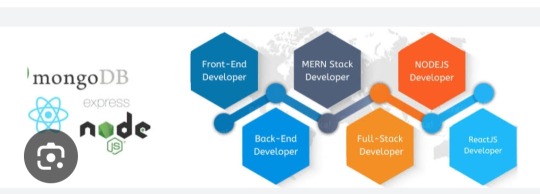
Importance of Mern Stack :
Full-Stack JavaScript – Uses JavaScript for frontend and backend, simplifying development.
High Performance – Node.js ensures fast, scalable applications.
Cost-Effective – Open-source, reducing development costs.
Rapid Development – React’s reusable components speed up UI building.
Flexibility – Suitable for web apps, SPAs, eCommerce, and real-time applications.
Scalability – MongoDB handles large data efficiently.
Strong Community Support – Large developer base ensures continuous updates and support.
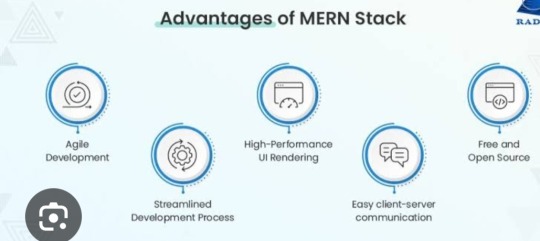
Now i will tell you the best institute for Mern stack course in Chandigarh .
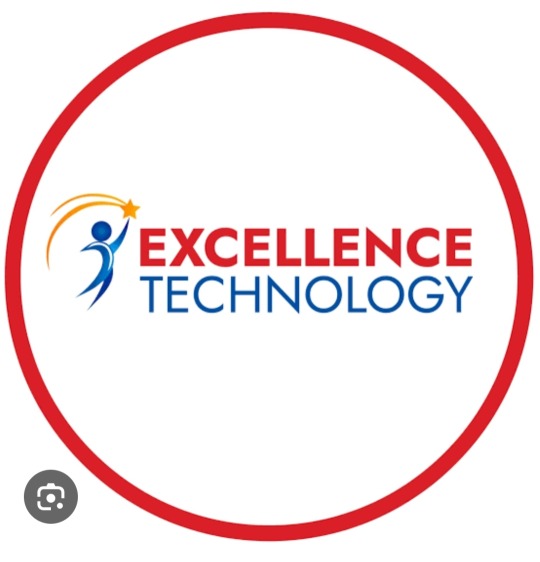
Excellence Technology is a leading EdTech (Educational technology) company dedicated to empowering individuals with cutting -edge IT skills and bridging the gap between education and industry demands. Specializing in IT training ,carrer development, and placement assistance ,the company equipts learners with the technical expertise and practical experience needed to thrive in today's competitive tech landscape. We provide IT courses like python ,Full stack Development, Web Design ,Graphic Design and Digital Marketing.
Contact Us for more details: 93177-88822

Extech Digital is a leading software development company dedicated to empowering individuals with cutting -edge IT skills and bridging the gap between education and industry demands. Specializing in IT training ,carrer development, and placement assistance ,the company equipt learners with the technical expertise and practical experience needed to thrive in today's competitive tech landscape. e provide IT courses like Python ,Full stack Development, Web Design ,Graphic Design and Digital Marketing.
Contact Us for more details: 93177-88822

Excellence academy is a leading software development company dedicated to empowering individual with cutting edge IT skills and bridging the gap between education and industry demands.specializing in IT training, career development, and placement assistance, the company equits learners with the technical expertise and practical experience needed to thrive in today's landscape. We provide IT courses like python, full stack development,Web design, and Digital marketing.
Contact Us for more details: 93177-88822
About Author
Nikita Thakur
Mern stack AI Developer/ 2+ years of experience
Excellence technology
Professional summary
Nikita thakur is a skilled MERN Stack AI Developer with over 2 years of experience at Excellence Technology. Proficient in MongoDB, Express.js, React.js, and Node.js, she integrates AI solutions to build scalable, high-performance web applications. Nikita excels in developing innovative solutions, enhancing user experiences, and driving business growth through technology.
2 notes
·
View notes
Text
Why Teaching Kids Programming is Essential for Their Future
In today’s rapidly advancing digital world, programming has become an essential skill, much like reading and writing. As technology continues to shape our lives, the ability to code is no longer limited to computer scientists and software engineers—it has become a fundamental skill for everyone. Teaching children programming at an early age not only prepares them for future careers but also nurtures essential cognitive and social skills.With the rise of educational platforms like id.alg.academy, learning to code has never been more accessible. This innovative platform empowers children with the knowledge and tools to explore coding engagingly and interactively, laying the foundation for a future filled with limitless opportunities.The Main Benefits of Teaching Children Programming1. Critical Thinking and Problem-SolvingOne of the most significant advantages of learning to code is the development of critical thinking and problem-solving skills. Programming challenges children to break down complex problems into smaller, manageable steps—a process known as decomposition. By writing code, debugging errors, and refining solutions, kids learn how to think logically and develop solutions methodically.For example, coding a simple game requires structuring commands in a logical sequence. If an error occurs, children must analyze what went wrong and troubleshoot the problem, sharpening their analytical thinking abilities. This logical approach extends beyond programming and applies to various real-life situations, from mathematics to decision-making skills.2. Creativity and InnovationCoding is not just about logic and algorithms—it is also an incredible tool for fostering creativity and innovation. When children learn to program, they gain the power to create their own games, animations, and interactive stories. This encourages them to think outside the box and develop unique solutions to challenges.Platforms like id.alg.academy provide a structured yet open-ended learning environment, allowing kids to experiment with different ideas and bring their imaginations to life. Whether designing an app, developing a robot, or creating a digital artwork, coding enables children to become creators rather than passive consumers of technology.3. Career Opportunities in Technology and BeyondThe demand for skilled programmers is growing at an exponential rate. From artificial intelligence and cybersecurity to web development and data science, programming skills are a gateway to numerous career paths. However, even outside the tech industry, coding knowledge is becoming a valuable asset in fields like finance, healthcare, and engineering.By introducing children to programming early, parents and educators give them a competitive edge in the job market. Learning platforms such as id.alg.academy make coding approachable, ensuring that children develop a solid foundation that can evolve into professional expertise in the future.
2 notes
·
View notes
Text

At TechQWare, we specialize in delivering cutting-edge On-Demand App Development Solutions designed to empower businesses across various sectors.
#On Demand Innovative software Development#androiddevelopment#websitedevelopment#webdevelopment#appdevelopment
0 notes
Text
The Real Power in AI is Power
New Post has been published on https://thedigitalinsider.com/the-real-power-in-ai-is-power/
The Real Power in AI is Power


The headlines tell one story: OpenAI, Meta, Google, and Anthropic are in an arms race to build the most powerful AI models. Every new release—from DeepSeek’s open-source model to the latest GPT update—is treated like AI’s next great leap into its destiny. The implication is clear: AI’s future belongs to whoever builds the best model.
That’s the wrong way to look at it.
The companies developing AI models aren’t alone in defining its impact. The real players in AI supporting mass adoption aren’t OpenAI or Meta—they are the hyperscalers, data center operators, and energy providers making AI possible for an ever-growing consumer base. Without them, AI isn’t a trillion-dollar industry. It’s just code sitting on a server, waiting for power, compute, and cooling that don’t exist. Infrastructure, not algorithms, will determine how AI reaches its potential.
AI’s Growth, and Infrastructure’s Struggle to Keep Up
The assumption that AI will keep expanding infinitely is detached from reality. AI adoption is accelerating, but it’s running up against a simple limitation: we don’t have the power, data centers, or cooling capacity to support it at the scale the industry expects.
This isn’t speculation, it’s already happening. AI workloads are fundamentally different from traditional cloud computing. The compute intensity is orders of magnitude higher, requiring specialized hardware, high-density data centers, and cooling systems that push the limits of efficiency.
Companies and governments aren’t just running one AI model, they’re running thousands. Military defense, financial services, logistics, manufacturing—every sector is training and deploying AI models customized for their specific needs. This creates AI sprawl, where models aren’t centralized, but fragmented across industries, each requiring massive compute and infrastructure investments.
And unlike traditional enterprise software, AI isn’t just expensive to develop—it’s expensive to run. The infrastructure required to keep AI models operational at scale is growing exponentially. Every new deployment adds pressure to an already strained system.
The Most Underappreciated Technology in AI
Data centers are the real backbone of the AI industry. Every query, every training cycle, every inference depends on data centers having the power, cooling, and compute to handle it.
Data centers have always been critical to modern technology, but AI amplifies this exponentially. A single large-scale AI deployment can consume as much electricity as a mid-sized city. The energy consumption and cooling requirements of AI-specific data centers far exceed what traditional cloud infrastructure was designed to handle.
Companies are already running into limitations:
Data center locations are now dictated by power availability.
Hyperscalers aren’t just building near internet backbones anymore—they’re going where they can secure stable energy supplies.
Cooling innovations are becoming critical. Liquid cooling,
immersion cooling, and AI-driven energy efficiency systems aren’t just nice-to-haves—they are the only way data centers can keep up with demand.
The cost of AI infrastructure is becoming a differentiator.
Companies that figure out how to scale AI cost-effectively—without blowing out their energy budgets—will dominate the next phase of AI adoption.
There’s a reason hyperscalers like AWS, Microsoft, and Google are investing tens of billions into AI-ready infrastructure—because without it, AI doesn’t scale.
The AI Superpowers of the Future
AI is already a national security issue, and governments aren’t sitting on the sidelines. The largest AI investments today aren’t only coming from consumer AI products—they’re coming from defense budgets, intelligence agencies, and national-scale infrastructure projects.
Military applications alone will require tens of thousands of private, closed AI models, each needing secure, isolated compute environments. AI is being built for everything from missile defense to supply chain logistics to threat detection. And these models won’t be open-source, freely available systems; they’ll be locked down, highly specialized, and dependent on massive compute power.
Governments are securing long-term AI energy sources the same way they’ve historically secured oil and rare earth minerals. The reason is simple: AI at scale requires energy and infrastructure at scale.
At the same time, hyperscalers are positioning themselves as the landlords of AI. Companies like AWS, Google Cloud, and Microsoft Azure aren’t just cloud providers anymore—they are gatekeepers of the infrastructure that determines who can scale AI and who can’t.
This is why companies training AI models are also investing in their own infrastructure and power generation. OpenAI, Anthropic, and Meta all rely on cloud hyperscalers today—but they are also moving toward building self-sustaining AI clusters to ensure they aren’t bottlenecked by third-party infrastructure. The long-term winners in AI won’t just be the best model developers, they’ll be the ones who can afford to build, operate, and sustain the massive infrastructure AI requires to truly change the game.
#adoption#ai#AI adoption#AI industry#AI Infrastructure#ai model#AI models#Algorithms#anthropic#applications#AWS#azure#budgets#Building#change#Cloud#cloud computing#cloud infrastructure#cloud providers#clusters#code#Companies#computing#cooling#data#Data Center#Data Centers#deepseek#defense#deploying
3 notes
·
View notes
Text
First Week, First Workload
Paul Oga
We had our first meet on the Software Designing and Engineering course under Sir Yu. Although I arrived late on his class (which was kind of embarrassing), still I'm glad I didn't decide to miss it as it was a very important session for the course.
Sir Yu held a class orientation where he discussed all the relevant things to note for the course — such as the grading system, class rules, expected topics to be encountered, and the project innovative task.
For our first task, we were instructed to form a group of four members. I teamed up with my "OG" blockmates which are Eucel, Lance, and Seth. We had to present two titles for our project proposals.
It was a nerve-wracking moment as I only had an hour sleep on that first meet and I couldn't think of ideas that would satisfy the given criteria of the project proposal.
Thankfully, Lance saved that night by providing us his insights which later became a huge help upon developing our titles and advocacy for the project.
Within a couple of hour, we finally submitted our titles to Sir Yu, and fortunately he approved it.
These are our proposed titles:
URentify: Book Rental Services for USTP Students
We came up for this title as there's no existing centralized book rental services in the university. Altho the library offers book borrowing, you compromise with "worst case scenarios" that would be a pain in the head to resolve.
What makes this relevant is that some instructors in the university only use specific books for their lectures and for most cases they aren't available in the library— and if they do they are often unavailable as you compete with bunch of students that also fall in line to use it.
This project will not only offers convenience but also a platform for students to share their educational materials and any sort of books that they no longer use.
TutoServ: USTP Students Tutorial Services
This project proposal does not only aims to provide a platform for USTP students to share their knowledge, but also to monetize from it. We observed that a lot of students struggle with the fast-phased approach of lecturing in the university, especially those that belongs to highly demanding programs. This results to information overload and poor learning retention which impacts the academic performance of the students.
This project would be very beneficial for students that also learns the best through one-on-one discussion.
Prior the class dismissal, Sir Yu tasked us to prepare a survey form that will serves as a tool to know the feedback of the respondents on our project proposals. We immediately brainstormed for the possible questions we needed to add on our survey forms. Luckily we were able to finish it within five hours.
Time flies, on our online class, Sir Yu utilized it as our online consultation. We consulted our survey forms and he approved it a day after.
We finished everything and now we're all set up for the title defense which will happen on Monday, January 20.
2 notes
·
View notes
Text
Finding Your Perfect Fit: Tips for Choosing the Right Coworking Space in Pune
In today’s fast-paced business landscape, the choice of workspace plays a pivotal role in the success of entrepreneurs, freelancers, and startups alike. For professionals in the tech industry, where flexibility, collaboration, and innovation are paramount, selecting the right coworking space in Pune can make all the difference.
Tech workers frequently encounter particular difficulties at work, such as the requirement for specialist tools or the desire for an exciting and innovative environment. Thankfully, Pune’s coworking spaces meet these demands by providing a variety of facilities, services, and tech-specific networking opportunities.
Tech professionals frequently lament the lack of access to state-of-the-art infrastructure and equipment. A lot of new businesses and independent contractors find it difficult to pay the hefty overhead of opening an office. At a fraction of the price, coworking spaces in Pune provide cutting-edge amenities like ergonomic workstations, conference rooms, and high-speed internet. For instance, Spaces Coworking in Pune provides a specialized tech hub with the newest hardware and software, allowing tech workers to interact and work effectively.
Another challenge faced by tech professionals is the need for a collaborative environment conducive to innovation and creativity. Traditional office settings often lack the energy and dynamism required to foster brainstorming sessions and idea generation. Co Working spaces in Pune address this pain point by curating vibrant communities of like-minded individuals from diverse backgrounds. By working alongside fellow tech enthusiasts, professionals can exchange ideas, share insights, and form valuable partnerships. Testimonials from members of The Mesh Cowork in Pune attest to the supportive and collaborative atmosphere that has helped them overcome creative blocks and achieve their goals.
Additionally, tech workers frequently look for chances to advance their careers and increase their skill sets. Coworking spaces in Pune organize a range of professional development workshops, seminars, and networking events for individuals working in the tech sector. For example, The Daftar Coworking Space in Pune frequently arranges hackathons and coding bootcamps, giving tech workers access to the newest trends and technology and invaluable learning opportunities.
In conclusion, choosing the right coworking space in Pune is essential for tech professionals looking to thrive in today’s competitive market. By considering factors such as infrastructure, community, and opportunities for growth, professionals can find their perfect fit and unlock their full potential in the dynamic and innovative ecosystem of coworking spaces in Pune.
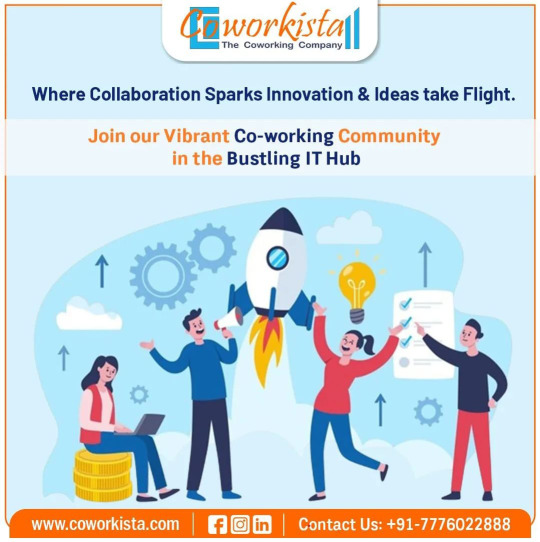
7 notes
·
View notes
Text
Trusted outsource software development teams - SSTech System

Outsource software development is the practice of relinquishing software-related duties to outside singularities or organizations. Outsourcing is used by firms to acquire software services and products from outside firms that do not have direct employees or employees under contract to the business entity that is outsourcing.
Infect, the outsourcing market worldwide is projected to grow by 8.28% (2025-2029) resulting in a market volume of US$812.70bn in 2029. This model is highly versatile and suits businesses of all sizes.
Start-ups often use outsourcing to develop MVPs quickly, while established companies might seek custom software development services or AI outsourcing services to address complex challenges. Outsourcing can include working with offshore development teams, global software development partners, or local experts like Australian software development experts for specific projects.
The benefits of outsourcing software development
Outsourcing has become a cornerstone for modern businesses due to its numerous advantages. Here’s a closer look at the key benefits:
1. Cost efficiency
Perhaps the biggest incentive for sourcing solutions from outsourcing service providers is the cost cutting factor. For instance, offshore software development in India provides expertise services at comparatively lower cost than that of in-house developed services in Western countries. This efficiency enable the enactments of cost savings in some other strategic sectors of the organization.
2. Access to global talent
Outsourcing can help to discover the wealth of new talents as well as the skills of professionals from other countries. No matter Whether it’s AI and machine learning integration, web application development in Australia, or outsourced healthcare software development, businesses can find experts in virtually any domain.
3. Scalability and flexibility
Outsourcing offers flexibility that is unparalleled in many organizations today. This is because; firms are able to expand and contract particular teams depending on the specific demand in projects. For example, outsourced IT solutions help business organizations prepare for different conditions while not having to employ permanent workers.
4. Faster time-to-market
With reliable software development teams in Australia or offshore development teams in India, businesses can speed up their project timelines. This helps innovations to make it through to the market early enough, which is useful for companies.
5. Focus on core activities
By delegating tasks like software maintenance and support or cloud software development in Australia to outsourcing partners, businesses can focus on their core competencies and strategic goals.
6. Reduced risk
In-house staff and trained outsourcing partners come with best practices, methods and procedures which when implemented reduce the chances of project hitch. Working with the top-rated IT outsourcing companies in Australia gives you confidence that your project is in safe hands.
Choosing the right outsourced software development partner

In the period from 2023 to 2027, the revenue of software outsourcing is forecasted to thrive at a CAGR of 7.54%. So, outsourcing partner selection is one of the most vital components since it determines the success of a given venture. Here are essential factors to consider:
1. Technical expertise
Check the partner’s competency and his knowledge of the field. For instance, SSTech System Outsourcing offers comprehensive solutions, from AI development services in India to mobile app development outsourcing in Australia.
2. Proven track record
Look for partners with a strong portfolio and positive client testimonials. A proven track record in delivering custom software development services or managing outsourcing software development contracts is a good indicator of reliability.
3. Effective communication
Effective and open communication is extremely important if the project is to be successful. Work with people who give frequent reports and employ efficient media to overcome the differences in time areas.
4. Cultural compatibility
There has to be a cultural match or at least appreciation for each other’s customs for there to be harmony in the working relationship. As such, staffed with proficient Australia software development experts or offshore development teams, whose experience is to work on global markets can coordinate and blend well with your work culture.
5. Security and compliance
You have to make sure that your partner complies with the standards and the policies that are in the industry. This is especially substantial for all information-sensitive projects such as outsourced healthcare software development or cloud software development in Australia.
6. Scalable infrastructure
Choose a partner capable of scaling their resources and infrastructure to meet your project’s evolving needs. This is crucial for long-term collaborations, especially with global software development partners.
AI-powered tools for outsourced development teams
According to a report from the US Bureau of Labor Statistics, software development ranks among the most sought-after professions. Hence, AI is at the forefront of reshaping the outsourcing industry. Therefore, the implementation of artificial intelligence will add value to business processes, make workflow easier, and boost the results of projects. Here are some examples:
1. Automated code reviews
Tools like DeepCode and SonarQube assist outsourced teams in detecting whether errors reside in the code line or not, and whether code needs to be enriched or not. This is particularly accurate concerning AI outsourcing and in-house development industries.
2. Predictive analytics
Automated analytics tools can predict such things as the time it will take to complete the project, how much money it will cost, and what risks are possible in a software development outsourcing scenario.
3. Smart project management
Tools and platforms such as Jira and Monday.com, when empowered with AI, allow the coordination of tasks and the tracking of progress and resource allocation.
4. AI collaboration tools
Communication and collaboration with internal members and offshore software development Australia partners get facilitated through applications that include, Slack, Microsoft Teams, and zoom with integrated AI functions.
5. Natural Language Processing (NLP)
AI-powered chatbots and virtual assistants simplify communication and issue resolution, making them valuable for managing outsourced IT solutions.
Best practices for managing outsourced development teams
Outsourced teams should be mandated and coordinated following a number of recommendations to ensure the efficiency of the entirety of the outsourcing process.
Here are the best practices to ensure your project’s success:
1. Set clear objectives
Make it clear to your project team, stakeholders, and other relevant parties what the parameters of the project are, what it is that you expect out of it, and what you expect to get from it in return. This fostaines consistency between your team and the outsourcing partner to increase efficiency in service delivery.
2. Choose the right tools
Use project tracking and collaboration software approaches to track and evaluate progress and meet regular informality and collaboration targets.
3. Foster a collaborative environment
It is worthy of note that constant communication is key to ensuring that your outsourcing team is on the same page with you. Fresh produce and feedback mechanisms need to be provided in order for there to be trust as is needed in project management.
4. Draft comprehensive contracts
There should be a comprehensive outsourcing software development contract. It should address issues to do with confidentiality, ownership of ideas and concepts, plea structure and mode of handling disputes.
5. Focus on long-term relationships
Building a long-term partnership with trusted providers like SSTech System Solutions can lead to consistent quality and better project outcomes.
Conclusion
To keep up with technology, outsourcing software development offers businesses solutions and support that can enable the creation of complex solutions out of mere ideas. Outsourcing has the benefits of minute overhead cost and is also a rich source of globally talented employees, and it offers the advantage of early time to market. Whether you’re looking for mobile app development outsourcing in Australia or seeking offshore software development in India or opting for AI outsourcing services, the potential is huge.
Such companies can only benefit from opting for reliable outsourcing companies such as SSTech System Outsourcing and embracing industry best practices to promote the success of business project implementations while enhancing market relevance. As technologies like AI and cloud computing are still changing the face of the outsourcing market, software development outsourcing will still be important for any company that wants to survive in a digital world.
Take the first step today—partner with global software development partners and unlock the full potential of your ideas with the power of outsourcing.
#SSTech System Outsourcing#SSTech System Solutions#AI outsourcing services#cloud computing#offshore software development#Outsource software development#AI outsourcing#web application development in Australia#custom software development services#mobile app development#outsourced IT solutions#cloud software development#IT Support & Maintenance Services
2 notes
·
View notes
Text
How AMD is Leading the Way in AI Development
Introduction
In today's rapidly evolving technological landscape, artificial intelligence (AI) has emerged as a game-changing force across Click for more info various industries. One company that stands out for its pioneering efforts in AI development is Advanced Micro Devices (AMD). With its innovative technologies and cutting-edge products, AMD is pushing the boundaries of what is possible in the realm of AI. In this article, we will explore how AMD is leading the way in AI development, delving into the company's unique approach, competitive edge over its rivals, and the impact of its advancements on the future of AI.
Competitive Edge: AMD vs Competition
When it comes to AI development, competition among tech giants is fierce. However, AMD has managed to carve out a niche for itself with its distinct offerings. Unlike some of its competitors who focus solely on CPUs or GPUs, AMD has excelled in both areas. The company's commitment to providing high-performance computing solutions tailored for AI workloads has set it apart from the competition.

AMD at GPU
AMD's graphics processing units (GPUs) have been instrumental in driving advancements in AI applications. With their parallel processing capabilities and massive computational power, AMD GPUs are well-suited for training deep learning models and running complex algorithms. This has made them a preferred choice for researchers and developers working on cutting-edge AI projects.
Innovative Technologies of AMD
One of the key factors that have propelled AMD to the forefront of AI development is its relentless focus on innovation. The company has consistently introduced new technologies that cater to the unique demands of AI workloads. From advanced memory architectures to efficient data processing pipelines, AMD's innovations have revolutionized the way AI applications are designed and executed.
AMD and AI
The synergy between AMD and AI is undeniable. By leveraging its expertise in hardware design and optimization, AMD has been able to create products that accelerate AI workloads significantly. Whether it's through specialized accelerators or optimized software frameworks, AMD continues to push the boundaries of what is possible with AI technology.
The Impact of AMD's Advancements
The impact of AMD's advancements in AI development cannot be overstated. By providing researchers and developers with powerful tools and resources, AMD has enabled them to tackle complex problems more efficiently than ever before. From healthcare to finance to autonomous vehicles, the applications of AI powered by AMD technology are limitless.
FAQs About How AMD Leads in AI Development 1. What makes AMD stand out in the field of AI development?
Answer: AMD's commitment to innovation and its holistic approach to hardware design give it a competitive edge over other players in the market.
youtube
2. How do AMD GPUs contribute to advancements in AI?
Answer: AMD GPUs offer unparalleled computational power and parallel processing capabilities that are essential for training deep learning models.
3. What role does innovation play in AMD's success in AI development?
Answer: Innovation lies at the core of AMD's strategy, driving the company to introduce groundbreaking technologies tailored for AI work
2 notes
·
View notes